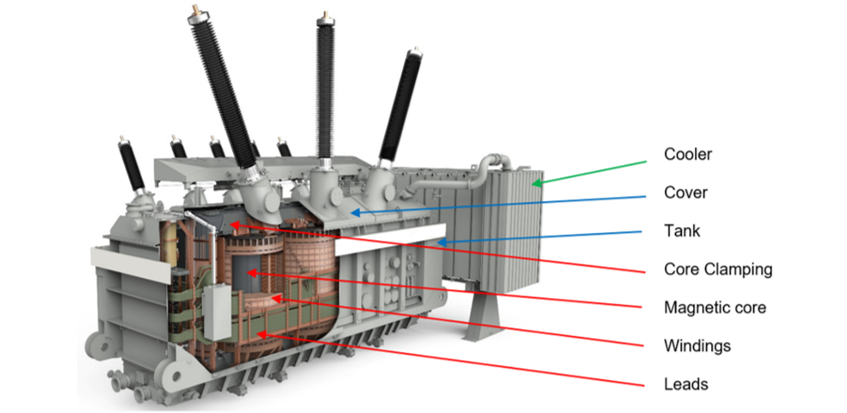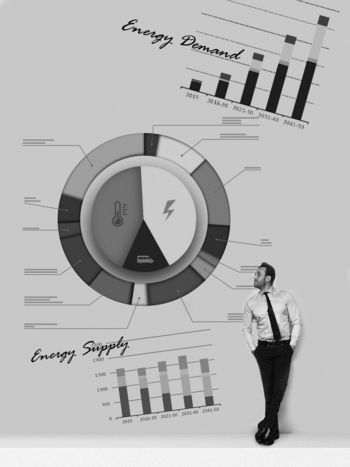Transformer Efficiency
Despite power transformers often having efficiencies of well over 99%, power efficiency has remained a prominent subject of discussion due to economic and climate related drivers. The obvious question arises as to whether it is still worthwhile to be talking about the efficiency of such machines?
The answer is a resounding YES! – but perhaps not for the reasons expected! Let CIGRE Working Group A2.56 elaborate.
Members
Convenor (HR)
Žarko JANIĆ
Secretary (IE)
Anthony WALSH
Yordan BOTEV (BG), Wilerson CALIL (BR), Thommas HAMMER (DE), Inaki ERVITI PAGOTO (ES), Jean Gardy GERMAIN (ES), Esa VIRTANEN (FI), Ahmet Kerem KÖSEOĞLU (TR), Adesh SINGH (ZA)
Contributors
Romain PETIT (FR), Nebojša GAVRILOV (HR), Hasse NORDMAN (FI), Ivica ROKETINEC (HR)
Even though the remaining percentage is a seemingly small fraction, it still translates to a significant power consumption, due to the widespread use of power transformers in energy generation, transmission and distribution (for instance, 0.5% of 300 MVA amounts to 1.5 MW) which might seem to provide scope for further savings through greater efficiency.
However, with efficiency already so high there are now declining returns to scale which means that small amounts of extra efficiency can involve very large investments. Hence another very good reason for keeping efficiency under consideration is that the return from saving carbon free losses generated from an increasing renewable grid is declining as the grids decarbonise, so that further increases in efficiency may be sub-optimal. Furthermore, with the increase in electrification of heat and transport, it can be expected that the key issues will in future be increasing the capacity of transformers within their existing footprint and tilting the balance of loss saving toward copper loss reduction, as the load factor will have increased and the relative importance of iron losses declined. So, this underscores the importance of continuing to prioritise appropriate levels of efficiency/peak losses and how these will be achieved.
In particular, correct assessment of energy efficiency levels is of increasing importance worldwide where existing fossil fuel generation is high and there is movement toward decarbonised electricity generation, transmission and distribution. This brochure is designed to explain where losses are generated and how they can be influenced.

Figure 1 - Core Type Transformer, origins of losses
Up to now most of the effort was devoted to influencing the losses in the design stage of a new transformer. In this brochure other factors influencing losses in operation are also considered, including these which may have a considerable influence on both transformer and system losses, e.g. system voltage. As losses are closely related to the operational temperature of transformer, more information is also provided on this topic.
For different countries or applications, the term ‘efficiency’’ can have a different meaning. On the one hand ‘efficiency’ can mean ‘cost efficiency’ in operation, on the other it can mean the ‘lowest loss possible irrespective of the cost’ i.e. highest ‘energy efficiency’. In this brochure a detailed guide is provided on how to ensure the achievement of cost efficiency through use of capitalization calculations in the planning/purchasing process. In addition, the brochure discusses the different types of losses found in the transformer, such as load losses, no-load losses and auxiliary losses. This should be something each transformer operator should take into consideration. The techniques used to reduce transformer losses in design, manufacturing and operation are also discussed. Efficiency is nowadays also associated with decreasing carbon dioxide (CO2) and similar environmental policies. There are examples of how the influence of decreasing energy consumption also results in CO2 reductions, which may vary between different countries and regions.
Unfortunately, there is no unique solution or recipe as the systems, consumptions, transportability, equipment efficiency and other factors are different, and the future will also bring different load increase in different regions. Nevertheless, this brochure can be a good base to understand how wide the topic is, what should be considered and how to approach the problem.

